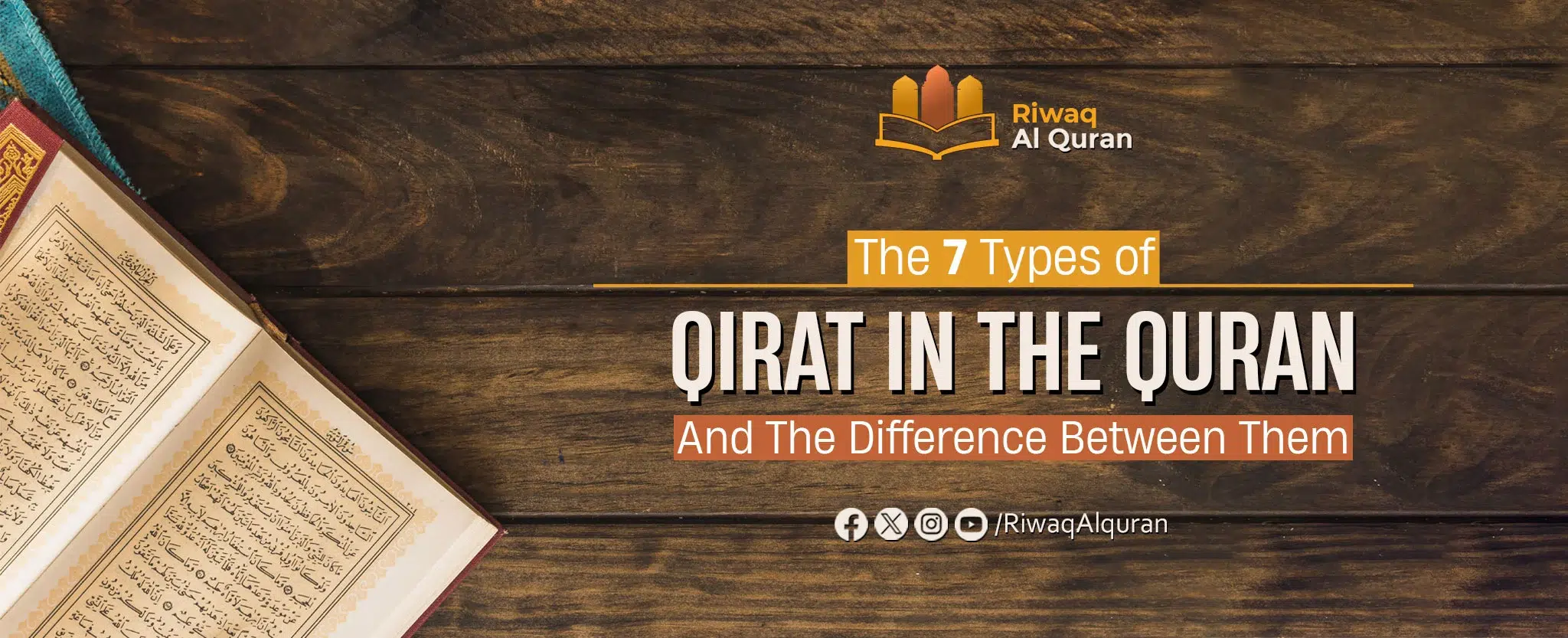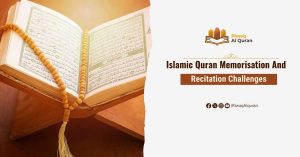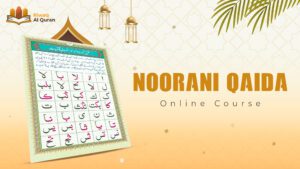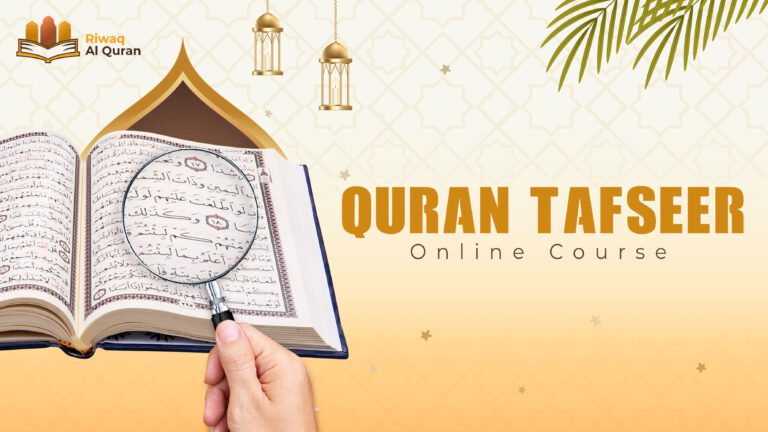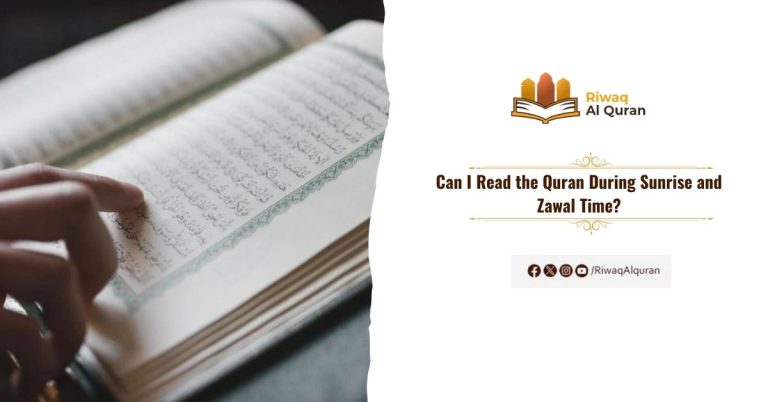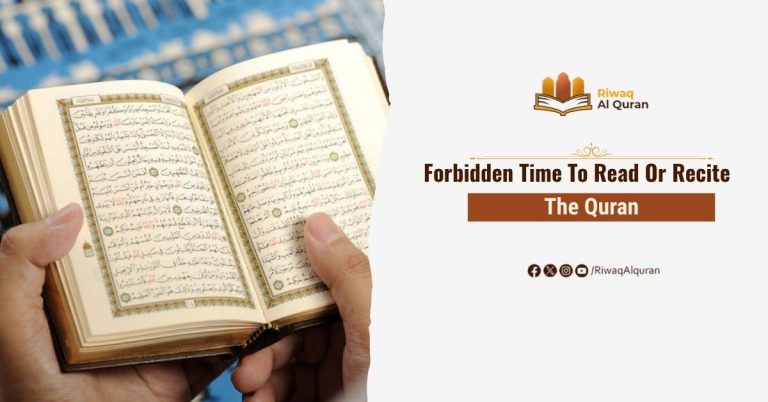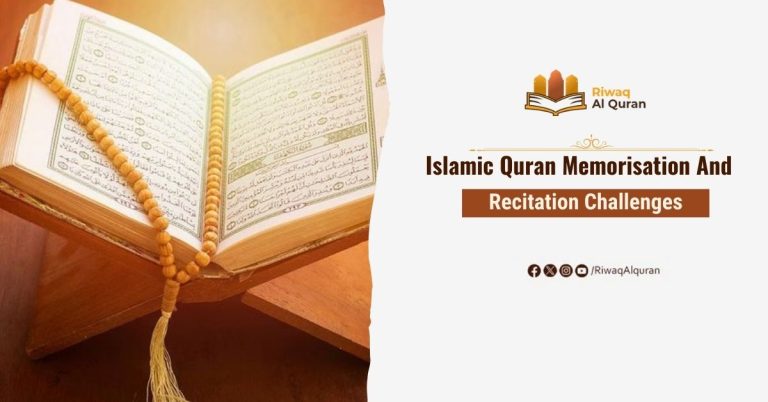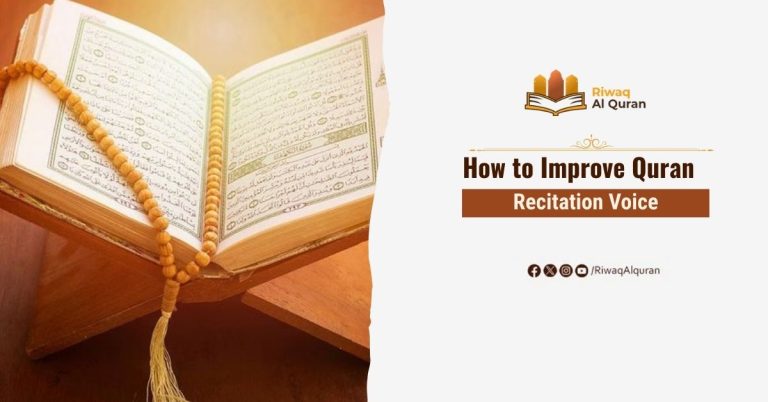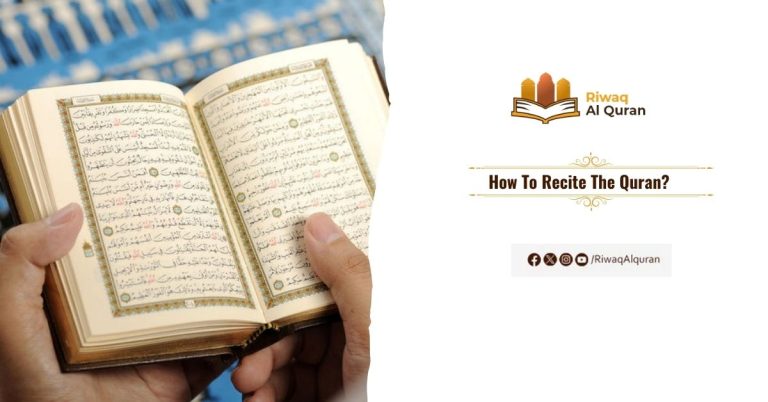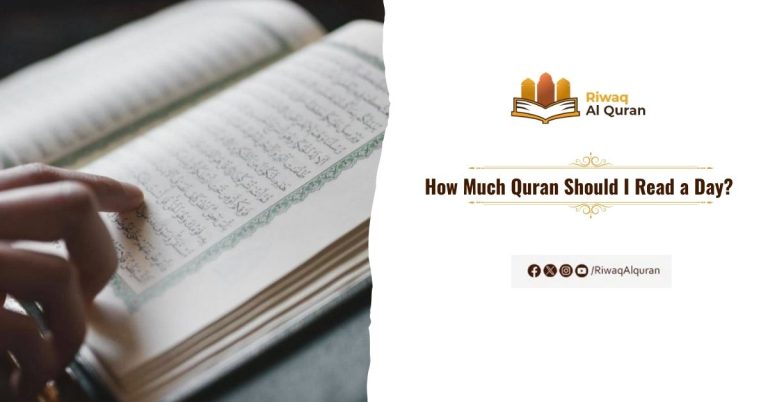Many Muslims do not know the meaning and types of Qirat. As an introduction, all languages worldwide have varied manners and dialects within them. English, for instance, is the most widely spoken language all across the globe and has different kinds of pronunciations based on the regions from which speakers belong.
The Arabic language that Allah has chosen as the standard-bearer of Islam to spread His message and communicator of the Quran is similar to other languages, having different dialectical variations occurring from the changes among accents, tones, and geographical conditions of the Arab. Such changes in the Quran recitation are called Qirat. To learn what Qirat exactly is and the different types of Qirat of the Quran, continue reading this post.
Table of Contents
Styles of Qur’an recitation (Riwayat)
Qirat (pl. of Qirah) in Islam refers to the various ways of reciting the Holy Quran. These are different lexical, phonetic, linguistic, morphological, and syntactical manners permitted with reciting the Quran.
Each Qirah has its own certain rules of recitation and variations in words and letters. Qirat also refers to the branch of Islamic studies that deals with these recitation manners. Thus, Qirat are the verbalization of the Quran, and the Quran is preserved in Qirat.
The word Qirat (قراءات) came from the Arabic language and was derived from the term Qirah (قراءة), meaning ‘reading’. This term has been debated by various Quranic scholars in different definitions, where one describes it as the knowledge of pronouncing the verses of the Quran.
It is named after the word Qari – one who recites the Holy Quran. Qirat meaning in Arabic is the reading or recitation of something. Qirat meaning in English is similar – the action of reading a piece of writing aloud from memory.
How Many Qiraat Are There in the Quran?
The Quran was revealed in seven modes of recitation, known as Qiraat, which multiply the eloquence and beauty of the text while returning to the same source—the instructions of the Prophet Muhammad (PBUH). These seven modes, conveyed by scholars from generation to generation, are termed Mutawatir. Later, Ibn Al-Jazari introduced three new recitation modes, known as Mashhur, expanding the list to ten.
These variations in recitation demonstrate the flexibility and richness of the Quranic scripture, while the source remains constant—the Almighty God. Learning about Mutawatir and Mashhur Qiraat offers deeper insights into Quranic recitation, inviting further exploration into this profound aspect of Islamic knowledge.
As it has been correctly quoted:
“Ibn ‘Abbas reported God’s Messenger as saying: “Gabriel taught me to recite in one mode, and when I replied to him and kept asking him to give me more he did so till he reached seven modes.” Ibn Shihāb said he had heard that those seven modes are essentially one, not differing about what is permitted and what is prohibited.”
(Bukhari and Muslim)
The frequent forms of recitation to have existed by Riwayah (reading transmission) for specific Qirat began when the Holy Book was inscribed in the era of Prophet Muhammad (PBUH) and was compiled by his order in the reign of the First Caliph, which was later united and broadcasted across the entire Islamic world during the reign of the Third Caliph. The scriptures in that Quran were not dotted, as seen in the illustration:
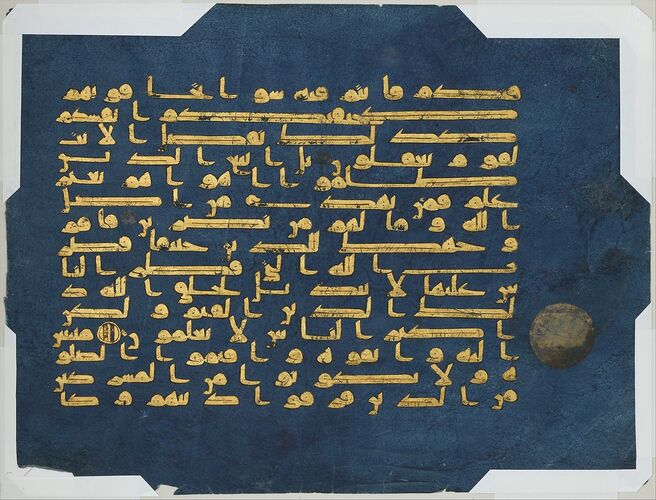
Thus coherently, leaving the door open for various interpretations of a single “Rasm” (drawing of writing), such as in the example: وَإِلَيْهِ يُرْجَعُونَ is read in other Qirat as يُرجِعون with a Kasra (i sound with a dash on the lower side) or تَرجِعون with a Ta’.
Does Qiraat or Different Recitation Contradict Quran Preservation?
The Quran’s authenticity remains intact despite the existence of different Qira’at (recitation methods) due to its divinely preserved nature as all Quran Qiraat are revealed from Allah and though part of the revelation. The Quran was revealed in seven Ahruf, or dialectical modes, to accommodate various Arab tribes and linguistic differences, without altering its core message or meaning. The Qira’at refer to different ways of pronouncing certain words or letters, reflecting regional accents or linguistic preferences, much like accents in spoken languages today.
What maintains the Quran’s authenticity is the rigorous transmission process. Each Qira’a adheres to strict conditions: a reliable, continuous chain of narrators tracing back to the Prophet Muhammad (PBUH), grammatical consistency within classical Arabic, and alignment with the written Uthmanic script distributed during the Caliphate of Uthman. All recognized Qira’at are accepted as valid and authentic because they complement one another without changing the Quran’s divine message or words as all are revelations from Allah.
The Quran’s oral and written preservation ensures its consistency, and while the Qira’at add richness to the recitation, they do not compromise the text’s meaning or its role as the most authentic divine revelation. The Prophet (PBUH) himself taught these recitations, making them part of the divine miracle of the Quran’s preservation.
Types of Qirat in the Quran
The types of Qirat are the methods in which the renowned authority chains holders recite the Quran. All Qirat got their name from the famous Rawis, who narrated it with an authenticated and established chain. Different types of Qirat prove that this Holy Book is a revelation from Allah (SWT) and preserved across centuries, as all these Qirat have been recited with a direct and authentic chain of relators back to Allah’s Apostle (PBUH).
There are 7 different types of Qirat and differences in the readings amount to two thousand words, however, with received acceptance, most Muslim countries have adopted the Quran with Hafs’s account of Asim. The ten Qirat are:
Mutawatir Qirat:
- Nafi’ (d. 169/785)
- Ibn Kathir (d. 120/737)
- Abu ‘Amr ibn al-‘Ala’ (d. 154/762)
- Ibn ‘Amir (d. 154/762)
- ‘Asim (d. 127/744)
- Hamza (d. 156/772)
- Al-Kisa’i (d. 189/904)
Mashhur Qirat:
- Abu Ja’far (d. 130/747)
- Ya’qub (d. 205/820)
- Khalaf (d. 229/843)
After learning about the origins of the Quran and how all the different formats of recitation came to be, it is imperative that everyone looking for information on how to become a Qari of Quran and how to learn Qirat of Quran is told about a deep practice that was initiated by the founder of Islam and the widest spreader of the Holy Book, Prophet Mohammad PBUH, as he famously quoted: “The best amongst you is the one who learns the Quran and teaches it.”
His instruction led to a large number of Muslims memorizing the Quran, and these well-versed reciters were then taught to teach others. Prophet Mohammed also sent Quran reciters to different tribes, establishing a tradition of teaching and practicing the Quranic text that has been passed down for centuries and is still practiced today.
Are you ready to embark on a life-changing adventure? Have you taken the initiative to become one of the world’s most accomplished reciters? If you answered yes, the next segment will be on how to do it.
Read more about: What Is Warsh Tajweed And Top Warsh Tajweed Rules To Learn?
The names of the 7 types of Qirat:
The following seven types of Qirat fall under the Mutawatir category – a transmission with independent chains of authorities so extensive as to eliminate the possibility of any mistake and on which there is common consent. And these Qirat were selected by the celebrated Quranic scholar in the field of Qirat named Abu Bakr ibn Mujahid.
1. Qirat Naafi’ Al-Madani (Madinah)
Imam Malik (RA) and Imam Ahmad ibn Hanbal (RA) recited the Holy Quran in this manner mostly. Qaloon and Warsh are the two Qaris who preserved this recitation.
2. Qirat Ibn Katheer Al-Makki (Makkah)
Qunbul, Al-Buzzi, and Imam Shafi recited the Quran in this way. Al-Buzzi and Qunbul are the two Qaris who preserved this recitation.
3. Qirat Abu Amr al-Basri (Basra)
Ad-Doori and As-Soosi are the two Qaris who preserved this reading manner of the Holy Quran.
4. Qirat Ibn Aamir ash-Shami (Syria)
Ibn Dhakwan and Hisham are the two Qaris who recited and preserved this recitation of the Quran.
5. Qirat Asim Al-Kufi (Kufa)
Imam Abu Hanifa (RA) and Imam Ahmad ibn Hanbal (RA) often recited the Quran in this manner. The two Qaris who preserved this recitation manner are Hafs and Shuba.
6. Qirat Hamzah al-Kufi (Kufa)
The two famous Qaris who preserved this reading manner are Khallad and Khalaf (who also has his own Qirat, i.e., Qirat Khalaf al-Bazzar).
7. Qirat Al-Kisaa’i (Kufa)
Al-Layth and Ad-Doori are the two Qaris who preserved this Quran recitation manner.
In total, there are ten Qirat, but only seven of them are usually considered. The reason is at the start of the Muslim conquest, the seven prominent scholars and their students stayed in a specific region, while the other three moved to different areas across the world until a scholar named Ibn el Jazerry traveled worldwide and found other three recitation manners. However, the other three types of Qirat are not included most of the time.
Experience Riwaq Al Quran Classes
Watch real moments from our live sessions at Riwaq Al Quran and see how we bring learning to life. These clips highlight our interactive, student-focused approach—designed to keep learners engaged, motivated, and actively involved in every step of their educational journey.
What is the Origin of The Types of Qirat?
The existence of different styles of Qirat is deeply rooted in the historical and linguistic diversity of the Arabic language, as well as the various ways in which the Quran was revealed to Prophet Muhammad over approximately 23 years in different contexts and situations.
As a result, multiple authentic ways of reciting the Quran emerged, each with its unique pronunciation, linguistic nuances, and styles. In essence, The differences in pronunciation and recitation styles do not affect the meaning of the Quran. The diversity in Qirat is seen as a testament to the richness and flexibility of the Arabic language and serves as a means of preserving the Quran in its original form.
Here are some key reasons why there are different styles of Qirat:
1. Dialectical Variations:
The Arabic language had various dialects and pronunciations across different tribes and regions during the time of Prophet Muhammad. The Quran accommodates these linguistic variations, allowing for different Qirat to preserve the original pronunciation.
2. Flexibility in Revelation:
The Quran was revealed to Prophet Muhammad in different situations and contexts, sometimes with slight variations in wording to convey similar meanings. The various Qira’at reflect these nuanced revelations while maintaining the integrity of the message.
3. Preservation of Authenticity:
The preservation of the Quran is not limited to its written form but also extends to its oral transmission. Different Qirat serves as a means to ensure that the Quran is recited accurately, with meticulous attention to pronunciation and linguistic details.
4. Cultural and Regional Influences:
Over time, as Islam spread to different regions and cultures, certain styles of Qira’at became associated with specific areas. The transmission of Qira’at was influenced by the scholars and communities in those regions, leading to the development and preservation of distinct recitation styles.
5. Educational Traditions:
Different scholars and teachers had their ways of reciting the Quran, and their students learned and transmitted those specific styles. This contributed to the diversity of Qirat across various Islamic traditions.
It is important to note that all the recognized Qirat are considered valid. The differences in pronunciation and recitation styles do not affect the meaning or essence of the Quran. The diversity in Qirat is seen as a testament to the richness and flexibility of the Arabic language and serves as a means of preserving the Quran in its original form.
How Many Types of Quran Qirat We Have?
There are seven types of Quran Qirat, each named after renowned authority chain holders who recited the Quran in distinct manners. These Qirat are categorized as Mutawatir, indicating transmission with extensive and independent chains of authorities.
Selected by Quranic scholar Abu Bakr ibn Mujahid, these Qirat include Qirat Naafi’ Al-Madani, Qirat Ibn Katheer Al-Makki, Qirat Abu Amr al-Basri, Qirat Ibn Aamir ash-Shami, Qirat Asim Al-Kufi, Qirat Hamzah al-Kufi, and Qirat Al-Kisaa’i.
While there are ten Qirat in total, these seven are the most commonly recognized and preserved, reflecting the diverse recitation styles of the Quran.
7 Dialects of the Quran
After learning how many Qirat of the Quran we have, people should focus on its different dialects as well. Usually, people confuse Qirat with Ahruf (the dialects of the Quran). The Holy Quran was revealed to Allah’s Messenger (PBUH) in seven Ahruf (plural of Harf), translated as ways, dialects, forms, modes, and styles.
On the other hand, Qirat refers to the method of pronunciation used in the Quran recitations and are different from the 7 styles of Quran recitation (Ahruf). It is believed that these seven dialects belong to the seven tribes, which include Quraysh, Hudhayl, Tameem, Hawaazin, Thaqeef, Kinaanah, and Yemen.
The wisdom behind this was to make Quran recitation and memorization easier for the local tribes who speak Arabic differently. These seven dialects were reduced to one, that of the Quraysh, during the rule of third caliph Uthman ibn Affan (RA) since variant styles of readings had the potential to cause divisions among Muslim ummah.
All of the seven modes of recitation are based on this dialect. The basis to the fact that there are seven different Ahruf in which the Holy Quran was revealed to Prophet Muhammad (PBUH) can be traced back to various hadiths, some of which are as follows:
Ibn Masud reported that Allah’s Apostle (PBUH) said:
“The Qur’an was sent down in seven modes. Every verse in it has an external and an internal meaning, and every interdiction has a source of reference.” [Mishkat al-Masabih]
And in another hadith, Ibn Abbas reported that the Messenger of Allah (PBUH) said:
“Gabriel taught me to recite in one mode, and when I replied to him and kept asking him to give me more, he did so till he reached seven modes.” Ibn Shihab said he had heard that those seven modes are essentially one, not differing about what is permitted and what is prohibited. [Sahih Muslim]
Do I Have the Choice to Decide Which Qira’at I Want to Recite?
Absolutely! You have the choice to decide which Qira’ah you want to recite when reading the Quran. The ten Qirat represent various authentic and valid ways of reciting the Quran, and they are all accepted within the Islamic tradition. Muslims are free to choose the Qira’ah that they find more comfortable or appealing.
The choice often depends on factors such as personal preference, regional traditions, or the influence of the Quran teacher. For example, in certain regions, one particular Qira’ah may be more commonly recited, and individuals may naturally adopt that style. However, there is no obligation to stick to a specific Qira’ah, and you are free to choose the one that resonates with you.
It is important to note that regardless of the chosen Qira’ah, the meaning and message of the Quran remain consistent. The various Qirat primarily differ in the pronunciation and linguistic nuances, not in the core teachings of the text.
Where Is Each Qiraat Most Notorious?
The popularity and notoriety of specific Qirat styles can vary across different regions and communities. However, it’s important to note that Muslims worldwide may use different Qira’at, and the choice often depends on historical, cultural, and educational factors. Here’s a general overview of where some Qirat are commonly associated:
- Hafs: One of the most widespread Qira’at and is commonly used in many parts of the Muslim world. It is especially prevalent in North Africa, Egypt, Sudan, and parts of the Arabian Peninsula.
- Warsh: Widely used in North and West Africa, including countries such as Morocco, Algeria, Tunisia, Mali, and Niger.
- Qalun: A variant of Warsh and is used primarily in Libya.
- Al-Duri: Associated with the Warsh tradition and is used in parts of North Africa.
- Al-Kisai: Often recited in parts of Sudan and West Africa.
- Khalaf: Found in certain regions, including parts of Sudan and West Africa.
- Ya’qub: Recited in Sudan and some parts of West Africa.
- Hamzah: Known in Sudan and other parts of West Africa.
- Abu Ja’far: This one is found in Sudan and parts of West Africa.
- Ibn Kathir: Associated with the Warsh tradition and is used in parts of North Africa.
How to Differentiate Between Different Qirat Styles?
Differentiating between the various Qirat styles can involve recognizing distinct pronunciation, recitation patterns, and linguistic nuances. Here are some general guidelines to help you differentiate between them:
1. Phonetics and Pronunciation:
Pay attention to the pronunciation of specific letters and sounds. Different Qirat may have variations in the pronunciation of certain Arabic letters or sounds.
2. Vowel Length and Harakat:
Observe the length of vowels and the placement of diacritical marks (Harakat). Some Qirat may differ in the length of vowels or the presence or absence of certain diacritics.
3. Tajweed Rules:
Each Qira’ah may emphasize certain Tajweed rules, such as rules related to elongation (Madd), pauses (Waqf), and other articulation points. Familiarize yourself with these rules to recognize the differences.
4. Word Endings and Conjugations:
Pay attention to how words are pronounced at the end of verses or when they are part of a grammatical construction. Different Qirat may exhibit variations in word endings and conjugations.
5. Rhythm and Melody:
Each Qira’ah has its unique rhythm and melodic pattern. While it may not be as noticeable to beginners, with more exposure, you may start to recognize the distinctive musicality of each style.
6. Consult a Qualified Teacher:
Working with a qualified Quranic teacher who specializes in Qira’at can provide valuable guidance. They can correct your recitation, point out specific differences, and help you understand the nuances of each style.
7. Listen to Different Recitations:
Regularly listen to recitations by proficient Qaris who follow different Qirat styles. This exposure will help you develop an ear for the variations and differences in pronunciation.
Remember that the primary objective of reciting the Quran is to understand and convey its message accurately. While appreciating the diversity in Qira’at, it’s essential to maintain the correct Tajweed and adhere to the rules of recitation. If you’re unsure about your recitation, seeking guidance from a knowledgeable teacher is highly recommended.
Inside Riwaq Al Quran: Live Class Highlights
Take a closer look at authentic excerpts from our live classes. At Riwaq Al Quran, our instructors create a dynamic and supportive learning environment where students stay engaged, build confidence, and thrive in their studies.
Why Students Love Learning with Riwaq Al Quran
Hear directly from our students about how Riwaq Al Quran Academy has transformed their connection with the Book of Allah. Their experiences reflect the dedication, care, and quality that guide every step of our teaching.
Enroll in Our Online Qirat Course
Riwaq Al Quran offers a valuable online learning platform for Muslims globally through its Learn Ten Qirat Online Course. Tailored for individuals in both Muslim and non-Muslim nations, the course is guided by knowledgeable and proficient Quran tutors.
The primary objective is to assist students in comprehending the nuances of the ten different Qirat and Ahruf, fostering a thorough understanding of Quranic recitation. Enroll now to enrich your understanding of Qirat and get a free trial class!
We offer several courses such as:
- Online courses for kids.
- Online Quran classes for kids and adults.
- Online Arabic courses
- Online Ijazah courses
- Online Islamic Studies courses.
Here are a sample of our set of Quran Courses that will be helpful for you:
- Online Tafseer Course: Delve into Quranic meanings with our insightful online Tafseer course.
- Noorani Qaida Online: Learn Quranic basics efficiently through our Noorani Qaida online program.
- Online Quran Recitation Course: Enhance Quranic recitation skills through our expert-led online course.
- Online Tajweed Classes: Master Tajweed rules for beautiful Quranic recitation in online classes.
- Quran Memorization Online Course: Memorize the Quran effectively with our specialized online memorization course.
- Online Qirat Course: Explore diverse Qirat styles with our comprehensive online Qirat course.
- Online Quran Classes for Kids: Nurture a love for the Quran in kids through interactive online classes.

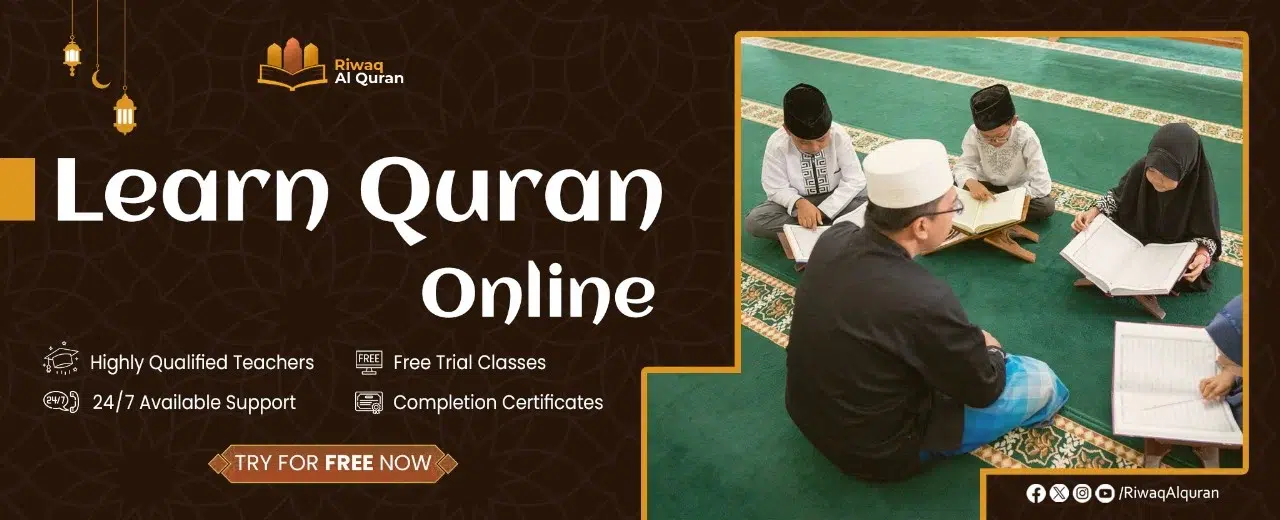
Conclusion:
The diversity in Quranic recitation styles, known as Qirat, stems from historical and linguistic variations in the Arabic language, as well as the diverse contexts in which the Quran was revealed to Prophet Muhammad. These differences, however, do not alter the Quran’s meaning but serve to preserve its original form and accommodate linguistic nuances.
Muslims have the freedom to choose from various Qira’at styles, with each having its unique pronunciation and recitation patterns. The popularity of specific Qirat styles varies across regions, influenced by historical, cultural, and educational factors. Differentiating between Qirat involves recognizing variations in pronunciation, Tajweed rules, and melodic patterns, often guided by qualified Quranic teachers.
Despite the diversity, the primary goal remains to accurately convey the message of the Quran. Enrolling in courses like Riwaq Al Quran’s Learn Ten Qirat Online Course can deepen one’s understanding of Qirat and Tajweed rules, facilitating a more profound connection with the Quranic text.

